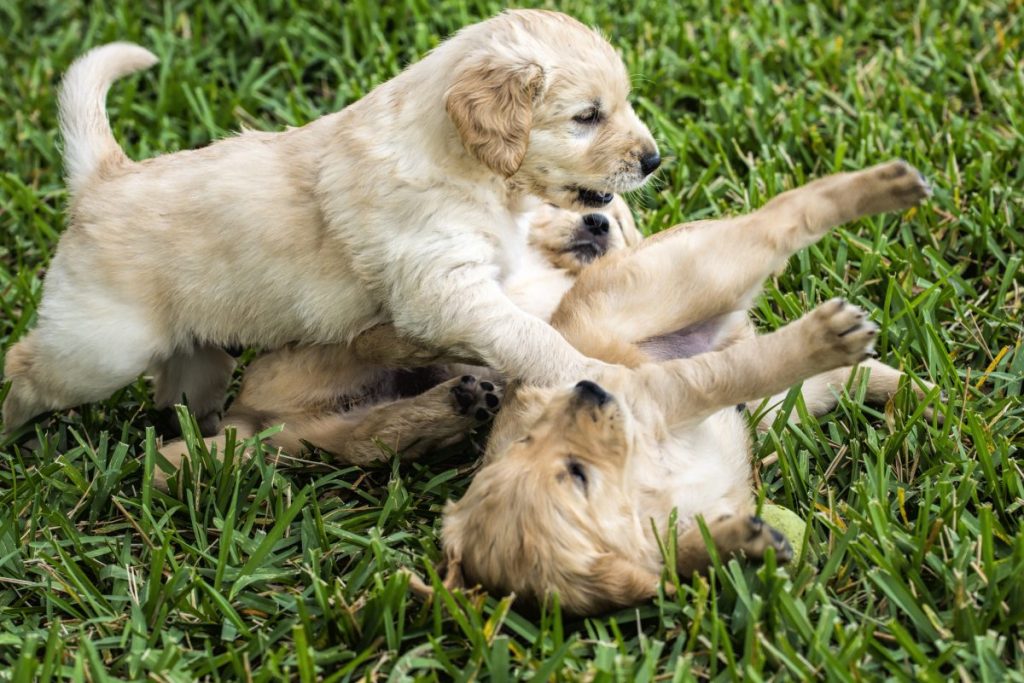Dog fighting and dog playing may look very similar to anyone who spends time around excited pups. That said, as a responsible dog parent, it’s crucial to understand the difference between the two behaviors. Dogs are social creatures that engage in playful interactions to build bonds and expend energy. However, for the safety of your fur baby, you should learn to recognize when puppy behavior is just innocent play or something more concerning.
Playing vs. fighting
Sometimes dog play can resemble dog fighting because many of the behaviors used during play are also used during fighting. In contrast, dogs modify these behaviors during play so that they don’t inflict injury.
For example, during both fighting and playing, dogs jump on one another and sometimes try to “pin” or force the other into a down position. Dogs bite, they chase, they snarl and show their teeth, and they vocalize.
These similarities are why we sometimes refer to rough and tumble play between dogs as “play fighting.” Even though on first take, play fighting and real fighting may look similar, there are some key differences between the two.
Dogs hold back when they’re playing
During play, dogs often engage in self-handicapping behavior. Self-handicapping occurs when one player voluntarily puts themselves in a vulnerable or disadvantaged position in order to give their partner a competitive advantage.
One example of a self-handicapping behavior that dogs use during play is the voluntary “down,” where one player falls to the ground — without assistance from their partner — and may flip over on their back and expose their belly.
This type of behavior would never occur during a real fight.
Dogs give signals to show that it’s play time
Dogs also use play signals during play, and one of the more commonly seen signals is the play bow.
The dog doing a bow will face their partner and crouch down with their forelimbs nearly touching the ground. At the same time, the hind end is high in the air, and the tail is often wagging.
Research shows play bows and voluntary downs tend to occur in conjunction with one another. Furthermore, they may work together to help keep play fun and encourage the participants to continue with the game.
Dogs who are playing, as opposed to fighting, will also sometimes display a characteristic play face, also seen in wild canids and primates. This play face looks a little bit like a relaxed, open-mouth smile.
Unfortunately, it’s unclear if it has any communicative function during play or whether it simply is an outward expression of an internal emotion (i.e., joy, happiness). Perhaps it even serves both functions.
Being able to differentiate between dog fighting and dog playing is essential for any responsible dog parent. By understanding the subtle cues and body language that dogs use to communicate, you can foster a safer and more enjoyable environment for your four-legged friend.




